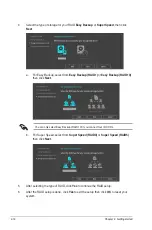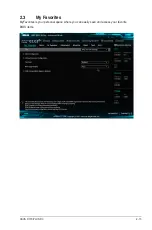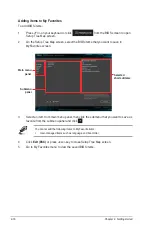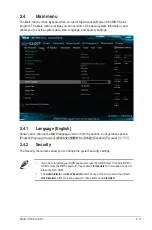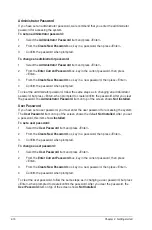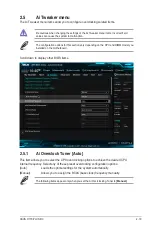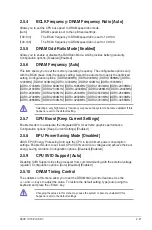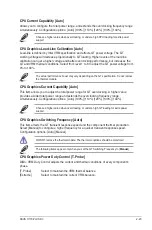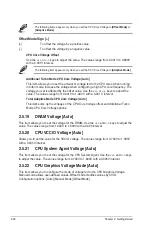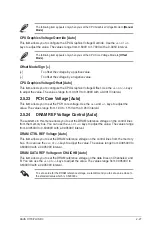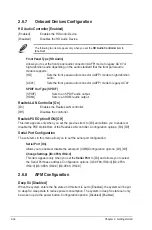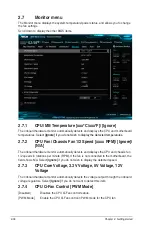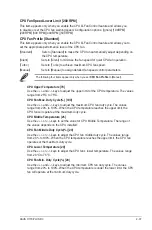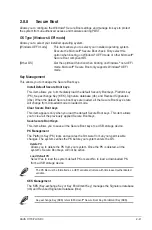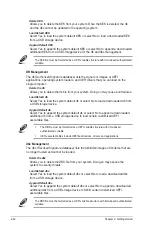
The following item appears only when you set the CPU Graphics Voltage Mode to
[Manual
Mode]
CPU Graphics Voltage Override [Auto]
This item allows you to configure the CPU Graphics Voltage Override. Use the <+> or <->
keys to adjust the value. The values range from 0.600V to 1.700V with a 0.005V interval.
The following item appears only when you set the CPU Core Voltage Mode to
[Offset
Mode]
.
Offset Mode Sign [+]
[+]
To offset the voltage by a positive value.
[–]
To offset the voltage by a negative value.
CPU Graphics Voltage Offset [Auto]
This item allows you to configure the CPU Graphics Voltage Offset. Use the <+> or <-> keys
to adjust the value. The values range from 0.001V to 0.999V with a 0.001V interval.
2.5.23 PCH Core Voltage [Auto]
This item allows you to set the PCH core voltage. Use the <+> and <-> keys to adjust the
value. The values range from 1.0V to 1.15V with a 0.05V interval.
2.5.24 DRAM REF Voltage Control [Auto]
The subitems in this menu allows you to set the DRAM reference voltage on the control lines
from the memory bus. You can use the <+> or <-> keys to adjust the value. The values range
from 0.39500V to 0.63000V with a 0.00500V interval.
DRAM CTRL REF Voltage [Auto]
This item allows you to set the DRAM reference voltage on the control lines from the memory
bus. You can use the <+> or <-> keys to adjust the value. The values range from 0.39500V to
0.63000V with a 0.00500V interval.
DRAM DATA REF Voltage on CHA/CHB [Auto]
This item allows you to set the DRAM reference voltage on the data lines on Channels A and
B. You can use the <+> or <-> keys to adjust the value. The values range from 0.39500V to
0.63000V with a 0.00500V interval.
To set a value for the DRAM reference voltage, we recommend you to set a value close to
the standard value which is 0.500000x.
ASUS H170-PLUS D3
2-27
Содержание H170-PLUS D3
Страница 1: ...Motherboard H170 PLUS D3 ...
Страница 10: ...x ...
Страница 19: ...ASUS H170 PLUS D3 1 9 1 4 3 Installing a DIMM 1 2 3 To remove a DIMM B A ...
Страница 80: ...2 46 Chapter 2 Getting started ...


